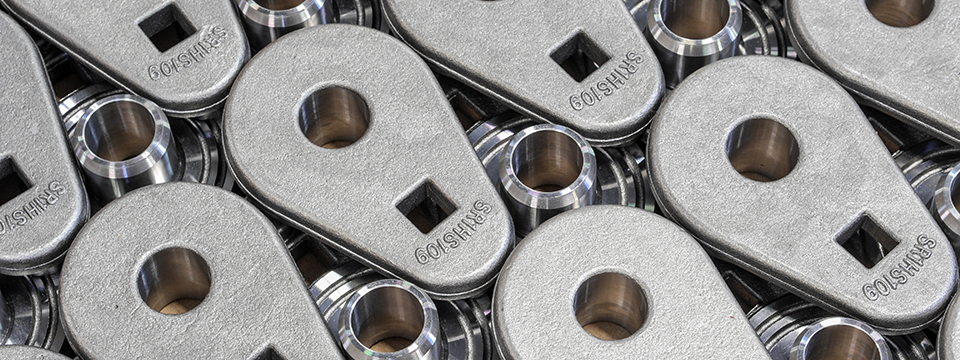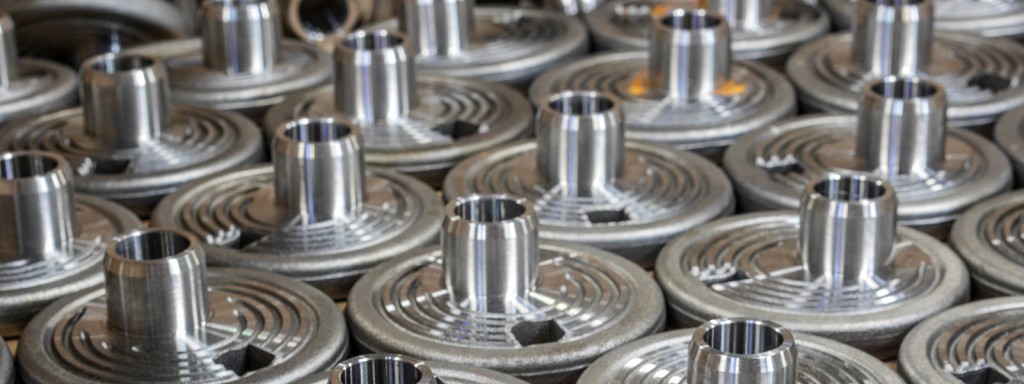At Paxos Plating, we offer a full complement of processes for your zinc plating needs. Our capabilities include both rack and barrel processes. We also offer a wide range of post plating finishes, including clear, yellow, and black chromate coatings. For environmentally conscious customers we offer a Trivalent clear chromate finish that meets or exceeds all salt spray requirements.
Within our streamlined, 35,000 square foot facility, we have three plating lines: a manual hoist rack line, an automatic rack line and a barrel line. Our tanks can hold parts up to 12 feet long and five feet deep, and the capacity of our tanks allows us to rack plate up to 600 sq./ft. per hour and up to 1,000 lbs. per hour on our barrel plating line.
Since the majority of our business is in the automotive industry, we understand the need for plating quality standards, comprehensive performance documentation and flexible logistics to meet the needs of domestic and international automotive suppliers. We apply that expertise to provide the same attention to detail and quality craftsmanship for our customers in the industrial and consumer products industries.
By keeping current with new technologies and the latest industry standards and regulations, we are able to ensure the highest quality products at competitive prices. From designing the right tooling for your product to assisting in packaging, your parts will be treated with the utmost care.
Contact us today and let us work with you to provide peace-of-mind service and superior manufacturing for all of your metal finishing needs.
Paxos Plating, Inc. has been quality certified
with an ISO 9001:2015 designation.

Electroplating is one kind of surface finishing. There are many other kinds. Everyone has seen and handled electroplated objects, even if they didn’t know it. Examples include kitchen and bathroom faucets, inexpensive jewelry and the trim on some automobiles. There are thousands of examples. In fact, it is certain that nearly every piece of metal you have ever seen has been through some kind of surface finishing process. There are three basic reasons for surface finishing: to improve appearance, to slow or prevent corrosion (rust) and to increase strength and resistance to wear (in the case of “engineering” finishes). An object may be processed for any or all of these reasons.
The term electroplating means the coating of an object with a thin layer of metal by use of electricity. The metals most often used are gold, silver, chromium, copper, nickel, tin and zinc, but many others are used also. The object to be plated is usually a different metal, but can be the same metal or a non-metal, such as a plastic grille for an automobile.
Electroplating usually takes place in a “tank” of solution containing the metal to be deposited on an object. This metal is in a dissolved form called ions. An ion is an atom that has lost or gained one or more electrons and is thus electrically charged. You cannot see ions, but the solution may show a certain color; a nickel solution, for example, is typically emerald green. The deposited metal, however, will be gray or silver in appearance.
When certain metallic chemicals dissolve in water, the metal atoms of these chemicals are freed to move about, but lose one or more electrons (negative charges) and, as a result, are positively charged. The object to be plated is negatively charged and attracts the positive metal ions, which then coat the object to be plated and regain the lost electrons to become metal again.

A familiar example of this process is the experiment often performed in which a key is plated with copper. The key (called the cathode) is connected to the negative terminal of a battery and is placed in a solution of vinegar, a weak acid. The positive terminal of the battery is connected to a piece of copper (called the anode–and often just a copper wire), which is placed in the solution. The acid slowly dissolves the wire, making copper ions that are then attracted to the key, regaining their lost electrons and becoming copper metal again, but now in the form of a thin coating on the key. The battery forces all this to happen and prevents the deposited copper from re-dissolving.
Positively charged copper ions are free in the solution, but are being attracted by the negatively charged key. As the ions contact the key, they regain their lost electrons and become copper metal and stick to the key wherever they touched it. This is the basic process of electroplating, and all forms of it work the same way.
